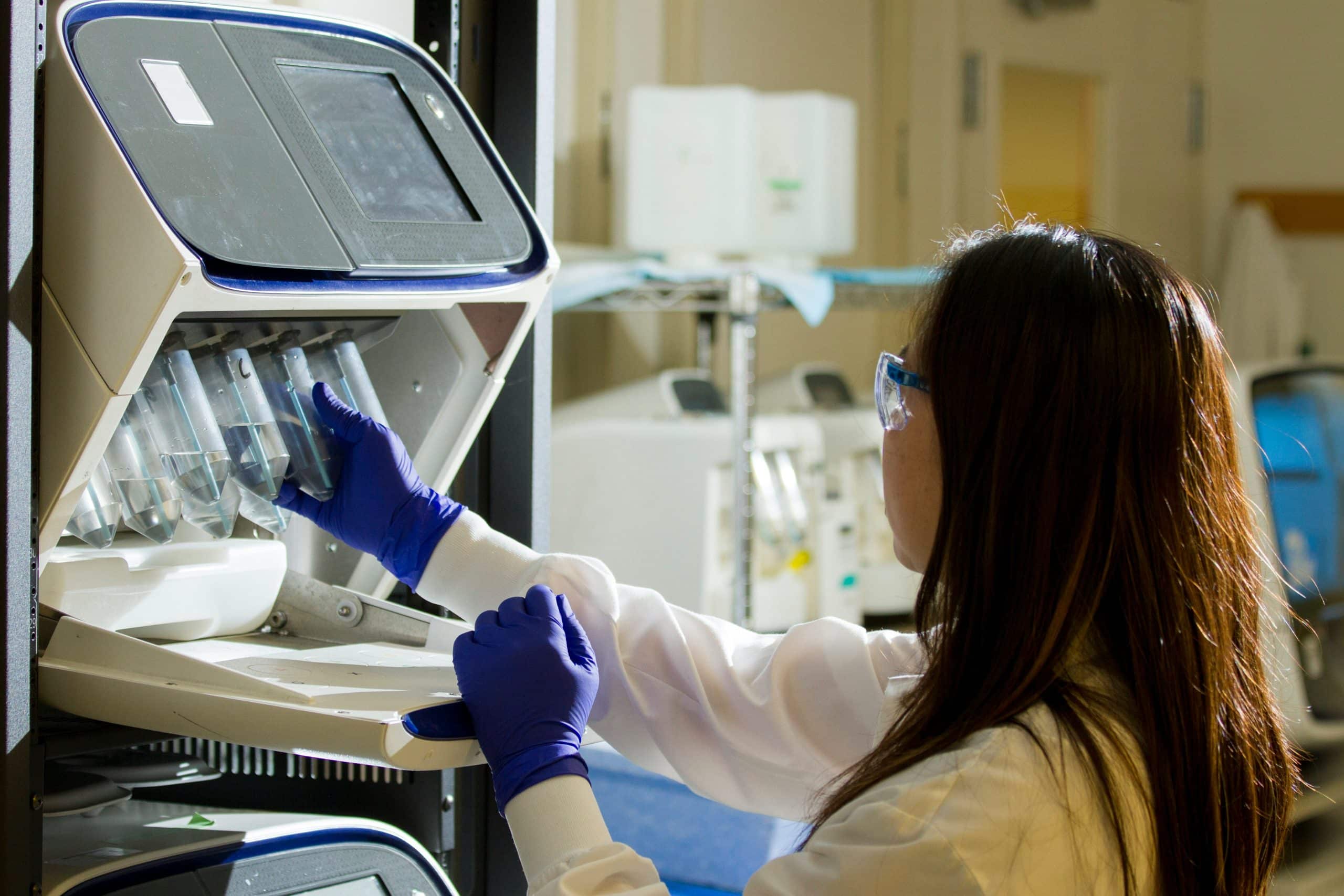New technologies in medical diagnostics

In the world of healthcare, technology continues to break barriers and create innovative ways to diagnose and treat various medical conditions. The advancements of new technologies in medical diagnostics are rapidly transforming the field and improving patient outcomes. This article will delve into some of the most revolutionary technologies defining the future of medical diagnostics.
Artificial Intelligence in Diagnostics
Artificial intelligence (AI) is increasingly being used in the healthcare sector, particularly in the field of medical diagnostics. With AI, medical professionals can make quicker, more accurate diagnoses, leading to more effective treatment strategies and improved patient outcomes.
A découvrir également : Advances in batteries and energy storage
AI can analyze large amounts of data in seconds, something that would take humans a considerable amount of time to do. Moreover, its computational power and ability to learn from past data makes it possible to predict future health problems in patients with high accuracy. Therefore, AI is not only helping to improve the speed and accuracy of diagnoses, but it is also playing a pivotal role in preventive healthcare.
Genomic Sequencing
Genomic sequencing is another advanced technology that is revolutionizing medical diagnostics. This technology involves sequencing the DNA or RNA of an organism to study its genetic material. With genomic sequencing, physicians can assess a patient’s risk of developing certain diseases, making it a powerful tool in preventive healthcare.
Cela peut vous intéresser : Unlock surprises: dive into the apple mystery box adventure
Furthermore, genomic sequencing can help doctors understand the genetic basis of diseases, which in turn can guide treatment strategies. For example, in the case of cancer, genomic sequencing can identify the specific genetic mutations causing the disease, allowing doctors to tailor treatments based on the patient’s genetic profile.
Liquid Biopsy
A liquid biopsy is a non-invasive test that detects cancer cells or pieces of DNA from tumor cells floating in blood. This revolutionary technology is changing the game in cancer diagnostics as it allows for early detection of the disease, even before symptoms appear.
Liquid biopsies are less risky, less painful, and quicker than traditional biopsy procedures. Additionally, they can provide a more comprehensive picture of the disease, as they can detect cancer mutations and changes over time, which can be crucial for determining the best treatment approach.
Wearable Medical Devices
Wearable technology, such as smartwatches and fitness trackers, is another innovative tool being used in medical diagnostics. These devices can monitor vital signs like heart rate and blood pressure, track physical activity, and even alert users to potential health issues.
Wearable technology is particularly useful for monitoring chronic conditions like diabetes and heart disease. The continuous, real-time data collected by these devices can help doctors track a patient’s condition and adjust treatment plans accordingly. Plus, the convenience and accessibility of wearable devices make them a popular choice for patients.
Telemedicine and Remote Diagnostics
Telemedicine and remote diagnostics are increasingly becoming integral parts of the healthcare system. These technologies allow patients to receive medical care and diagnosis from the comfort of their homes, reducing the need for physical hospital visits.
Telemedicine services can include virtual consultations, remote patient monitoring, and digital diagnostic tests. These services are particularly beneficial for patients living in remote areas, those with mobility issues, or during situations like the COVID-19 pandemic when in-person visits pose health risks.
Microfluidic Devices
Microfluidic devices, also known as lab-on-a-chip, are a new technology in medical diagnostics that allow for the analysis of tiny fluid samples. These devices can process or manipulate minute amounts of liquids in a controlled way, paving the way for quick, portable, and affordable diagnostic tests.
Using microfluidic devices, doctors can perform tests using just a single drop of blood or other bodily fluids, which are then passed through tiny channels in the device where various analyses are conducted. These devices are particularly useful for point-of-care diagnostics, enabling faster decision making and treatment initiation.
Quantum Computing in Medical Diagnostics
The concept of quantum computing, although still in its nascent stage, holds phenomenal potential in the medical diagnostic landscape. Quantum computers operate on principles fundamentally different from traditional computers, making them exceptionally efficient at processing and analyzing vast amounts of data.
Quantum computing leverages the power of quantum bits or "qubits," which unlike traditional binary bits, can exist in multiple states at once. This ability of qubits to take on various states simultaneously enables quantum computers to perform complex computations rapidly and accurately. In the field of medical diagnostics, this can revolutionize the way we process genomic data, analyze complex medical images, and predict disease patterns.
Take, for instance, the domain of genomic sequencing. Quantum computers, with their ability to process massive data sets swiftly, can significantly reduce the time taken to sequence a genome. This not only expedites diagnosis but also facilitates personalized treatment plans based on an individual’s unique genetic makeup.
Simultaneously, quantum computing can enhance medical imaging diagnostics. Traditional computing systems often struggle with the complexity and volume of data in medical imaging. Quantum computers, on the other hand, can swiftly analyze high-resolution 3D images, thereby ensuring more accurate diagnoses and predictions.
Microbial Diagnostics
The human body hosts countless microbes, collectively known as the microbiome, with each individual possessing a unique microbial fingerprint. Recent advancements in technology have highlighted the crucial role of the microbiome in our health, from digestion and immunity to mental health. Consequently, microbial diagnostics have emerged as a promising new frontier in medical diagnostics.
Microbial diagnostics involve analyzing an individual’s microbiome to identify potential health issues. This analysis can help doctors understand how the balance of microbes in a patient’s body may be influencing their health and could potentially lead to disease.
Advanced sequencing technologies now allow for comprehensive microbial profiling, enabling doctors to detect disease-causing pathogens or dysbiosis, an imbalance in the microbial community. This can help diagnose various conditions, from gastrointestinal diseases to mental health disorders, and even certain types of cancer.
Microbial diagnosis can also inform personalized treatment strategies, including tailored probiotic therapies or "microbial transplants," where healthy microbes are introduced to a patient’s body to restore balance. Furthermore, understanding an individual’s microbiome could also pave the way for predictive and preventive medicine, allowing doctors to anticipate health issues before they become problematic.
Conclusion
As the field of medical diagnostics continues to evolve, we are witnessing a paradigm shift from a one-size-fits-all approach to a more personalized, predictive and preventive model of healthcare. These advancements in diagnostic technologies, from AI and genomic sequencing to wearable medical devices, liquid biopsies, telemedicine, and microfluidic devices, are not only enhancing the accuracy and speed of diagnosis but also revolutionizing the way we approach treatment.
Looking to the future, emerging technologies like quantum computing and microbial diagnostics promise to further transform medical diagnostics. By harnessing the power of these cutting-edge technologies, healthcare professionals can not only diagnose diseases more accurately and expediently but also devise personalized treatment strategies, ultimately leading to improved patient outcomes. As we continue to embrace these new technologies, the future of medical diagnostics indeed looks promising.
